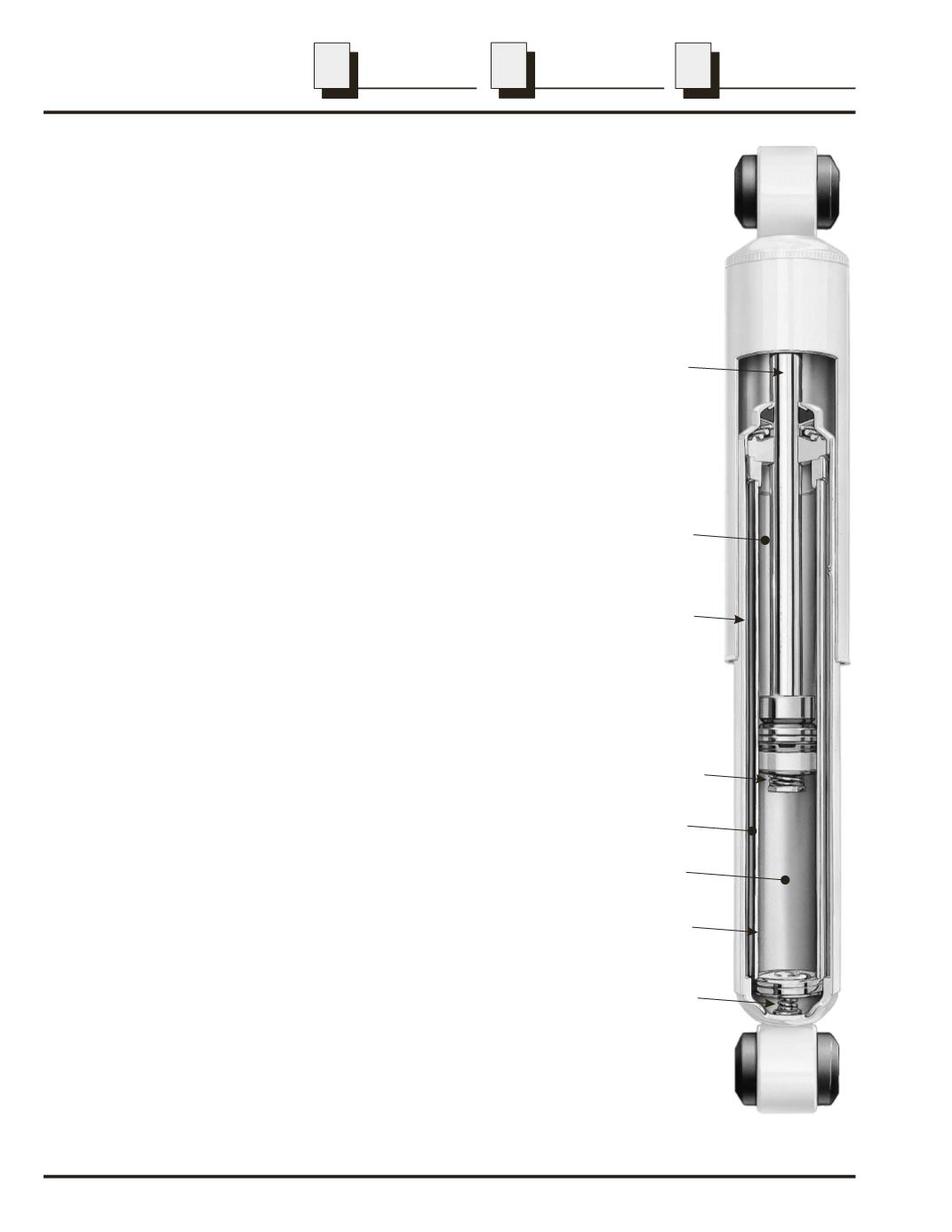

Piston
Rod
Reserve
Tube
Piston
Valving
Pressure
Tube
Base
Valve
Chamber
A
Chamber
B
Chamber
C
How Shock Absorbers Work
Compression Cycle
P
E
P
RODUCT MPHASIS ROGRAM
Shock Absorbers
2
Dayton Parts, Inc.
What Shock Absorbers Do
Shock absorbers damp or control motion. They help control tire bounce, excessive
spring movement and reduce the road effects transmitted to the truck, driver and
cargo. Good shocks help keep tires on the road and provide a more stable ride.
Shock absorbers are critical to control vibration and limit suspension travel on
today's low rate air spring and taper leaf suspensions. And, shock absorbers can
improve cost per mile by helping to reduce excessive vibration to improve the
service life of equipment with less downtime.
Today's shock absorber is a velocity sensitive hydraulic damping device,
because the faster it moves, the more resistance it has to the movement.
This allows it to automatically adjust to road conditions.
A shock absorber works on the principle of fluid displacement on both its
compression and extension cycles. A typical heavy truck shock will have
more resistance during its extension cycle than its compression cycle.
The extension cycle controls motions of the vehicle body sprung weight.
The compression cycle controls the same motions of the lighter axle and
tire unsprung weight. This motion energy is converted into heat energy
and is dissipated into the atmosphere.
During the compression stroke or downward movement, some fluid flows
through the piston from Chamber B to Chamber A, and some through the
compression valve into the reservoir, Chamber C. To control the flow,
there are three valving stages in the piston and in the compression valves.
At the piston, oil flows through the oil ports, and at slow piston speeds, the
first stage opens. This allows fluid to flow from Chamber B to Chamber A.
At faster piston speeds, the increase in fluid pressure below the piston in
Chamber B causes the second stage piston valve to open. At high speed,
the limits of the second stage phase into the third stage orifice restrictions.
At the bottom of Chamber B, oil that is displaced by the piston rod is
passed through the three stage compression valve into Chamber C.
At slow speeds, the oil flows through an orifice in the compression valve.
As the piston speed increases, the fluid pressure increases, causing the
disc to open up away from the valve seat. Again, at high speeds the orifice
restriction becomes effective.
Compression control, then, is the force that results from the higher
pressure present in Chamber B which acts on the bottom of the piston and
the piston rod area.

















